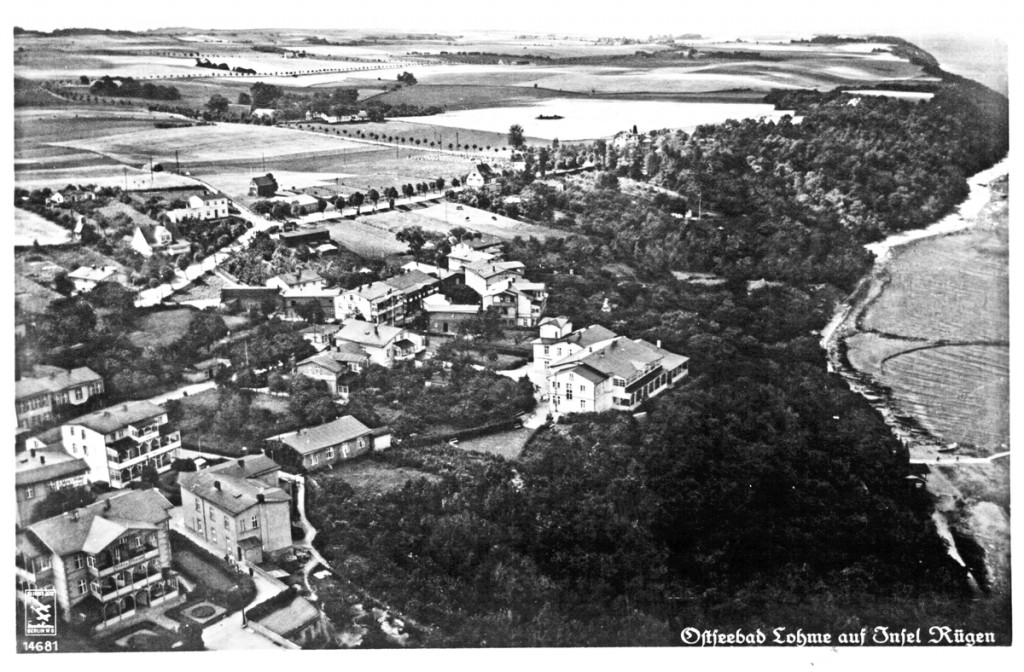A look at the history of the hotel
Once upon a time, around the year 1850, the mayor of Lohme, his name was Hagemeister, had a vision: tourism on Rügen. In the best panoramic position above the chalk coast, he opens the “Strandhotel Ostseebad Lohme” for the first visitors to the romantic area looking for accommodation. The main building of today’s „Panorama Hotel“ is the oldest bathing hotel on the whole island. Its level of comfort is still very modest, and bathing is also beginning to be rather subdued. But in 1855 the fishing village with around 150 inhabitants was recognized as Rügen’s first seaside resort. In 1891 a warm bath was built on the bank, men’s and women’s baths were half a kilometer apart to prevent immoral approaches on water and on land. In 1909 the port expansion was completed, and steamers and excursion boats could now dock in Lohme. Guests arrive by car from the Sassnitz and Sagard train stations.
Despite growing local competition, the “Strandhotel” remains a sought-after place to stay for citizens, artists and celebrities.






Around 1890, the Emil Melkers family took over the hotel on the chalk cliff. The „House 1st Class“ already advertises with shady balconies and verandas as well as its „excellent and plentiful cuisine“. The pension then cost 4-6 Reichsmark „incl. Room“. There is a table d’hôte „without wine obligation“ and you can play French billiards. Illustrious guests are not long in coming. The poets Theodor Fontane and Gerhart Hauptmann as well as the American traveler Balduin Möllhausen came. They all raved about Lohme’s romantic flair and passed it on. „Grey’s Hotel“ next door was the largest hotel in the area when it opened in 1890, with 180 beds. It burned down on August 23, 1918. Only part of the building remained standing, since 1998 it has served as the chic guest house of the „Panorama Hotel“.
After 1923, the „Strandhotel“ disappeared from the town’s travel guides and advertising brochures. Holidaymakers are now more drawn to the wide sandy beaches of the Baltic Sea coast with their sophisticated dance palaces. The old house now belongs to the city of Frankfurt/Oder and is used by it in the following years as a recreation center and country school. Old black-and-white photos show happy young girls and their carers in the best holiday mood on the terrace and on the beach. At noon, a siesta was held in deckchairs. But at 10 o’clock in the evening the fun was over! During the Second World War, outsourced Berlin school classes were taught in the rooms and halls. In today’s dining room, high school students have to study Latin grammar. They call the tower room “Olympus”.
A new era in hotel history begins in 1945: soon after the end of the war, the building is used as a headquarters for the Soviet occupying forces on Rügen. A large „goulash cannon“ in front of the entrance helps to provide for the needy villagers of Lohme. The last contemporary witnesses also dimly remember a Russian brothel on the first floor. You don’t know anything exactly. What is certain, however, is that the aging hotel building was used as a properly run church children’s home from 1947-1956, where the children were brought up in a strict manner. But the working population should also have something of Lohme’s beautiful view: 1957-1990 the now hundred-year-old house therefore serves as the FDGB holiday home „Paul Ehrlich“. Visitors from back then tell that East German companies whose employees wanted to vacation in the home first had to install washbasins or seal roofs at their own expense in order to be able to take advantage of the privilege.
1991: After German reunification, many want to discover the Baltic Sea islands north of Berlin. But the tourism infrastructure is missing, there are still hardly any hotel beds. After a year of searching up and down the coast, the then almost 38-year-old Matthias Ogilvie from Aachen suddenly found himself in front of the object of his dreams – and seized his chance. On July 17 he receives the key to the empty FDGB holiday home. This is how the historian and philosopher becomes an enthusiastic hotelier overnight. The structural condition of the house is deplorable. However, all rooms are already occupied on the same evening, although initially there is neither bed linen nor hot water. The kitchen doesn’t work either. The first guests are modest – and invite their host Ogilvie to an improvised breakfast.
The makeshift repaired former beach hotel officially opened on September 13, 1991 under the new name „Panorama Hotel Lohme“. Matthias Ogilvie distributes flyers to visitors to the Königsstuhl, sometimes for ten hours. At the end of 1992, the house passed into the hands of Matthias Ogilvie and his brother Erich. The three-year renovation and expansion work is now beginning. 20 employees and 15 trainees take care of the well-being of the guests 10 years later. The hotel becomes one of the best-known addresses on the Baltic Sea coast. In 1997 it had 62 beds. Former Chancellor Angela Merkel always liked to visit it when she came to Rügen. Several guest books already testify to the beautiful moments that hotel guests have experienced in this house with history. Apparently they liked us.
-Ende-